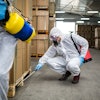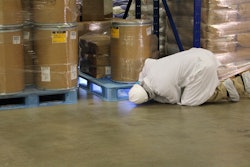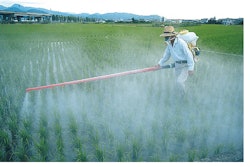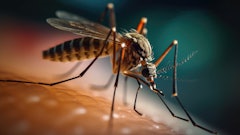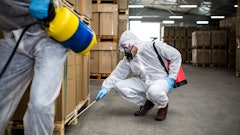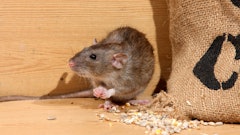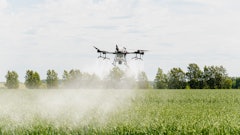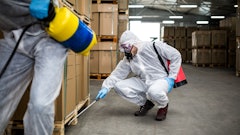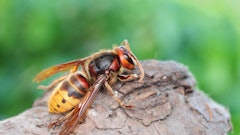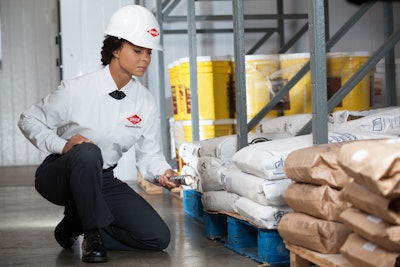
The Coronavirus disease (COVID-19) pandemic has put unprecedented stress on the food supply chain. From farm labor volatility to manufacturing disruptions to checkered retail demand, the industry has faced a ripple effect of challenges and workarounds. The last thing you need amidst all this uncertainty is for rodents to chew into your profitability.
How rodents can impact your business
At least 20% of the world's food is eaten or contaminated by rats and mice each year, according to the Indiana Department of State Health. These pests can carry various pathogens and can even transmit harmful diseases. They are known to cause severe property damage with their strong jaws, their actions and habits. And, food processing facilities offer the ideal habitat for them, providing open entry points, access to food and water, and multiple hiding places where they can escape and be protected from the cold outside.
They pose an obvious threat to food stored in your facility. Rats can consume up to 30 grams of food each day, which means 50 rats in a facility can demolish as much as 23 pounds of food per week. Any product they consume from, and those stored near the direct feeding, are at risk of contamination.
In addition to food product damage, rodents can also wreak havoc on structures. All rodents have a pair of incisors that never stop growing and jaws that can exert up to 7,000 pounds per square inch of pressure. They will constantly chew on just about anything, including wood, paper and dry wall. What’s more, because of their poor eyesight, they often mistake electrical wires for the grass and roots they gnaw on in the wild, which can lead to fires and even more catastrophic loss.
There are multiple health issues associated with these little mammals too. Rodents have been linked to over 50 pathogens from salmonella to the bubonic plague. They can easily spread diseases across multiple areas of a facility in a short period of time, especially since they are prolific breeders. Mice, for example, reach sexual maturity just 35 days after birth and can produce about eight litters of four to seven pups each year. That’s why the CDC included a warning about rodents when the pandemic began to impact operational norms. With many restaurants closing, rodents are left with a dwindling food supply, which makes food manufacturing sites a tasty target.
Preparation and sanitation the best defense against infestation
Rodents are attracted to cluttered, dirty spaces, especially where there’s food waste involved, so cleaning regularly helps reduce potential attractants. Maintaining a regular sanitation schedule can help you prevent rodents and recognize their presence early enough for intervention.
Here are some best practices for an effective sanitation routine:
· Regularly wipe down equipment and machinery to eliminate moisture and food buildup.
· Routinely sweep and mop your floors, especially around trash receptacles.
· Store food product off the ground on open-backed shelves and practice first in-first out protocols. Use plastic or metal containers that are difficult for rodents to chew.
· Apply a proper disinfectant to hard-non-porous surfaces.
· Strictly enforce employee handwashing and keep breakrooms free of clutter.
· Wipe up spills and leaks as soon as they happen.
· Store dumpsters as far as possible from your facility.
· Clean drains often in and around your building to eliminate food debris buildup.
· Seal openings around the exterior of your building. Adult mice can fit through holes as small as a dime, so you’ll want to use caulk or another waterproof sealant to close any gaps around pipes and other penetration points.
· Trim back vegetation so it’s at least two feet away from your buildings. Don’t let overgrown grass or bushes serve as a jumping off place for pests.
Watch for telltale signs
It doesn’t take a physical sighting to know that rodents have taken up residence. Here are clues pointing to a rodent issue:
· Droppings. Capsule-like pellets around an area are a red flag.
· Nests. Shredded materials, like paper, cloth and cardboard in dark places such as crawlspaces, between walls and in garbage dumps.
· Burrows. Elaborate underground tunnels or simple excavated holes near structures can indicate rodent presence or infestation.
· Grease marks. Brownish grease marks on your walls can indicate rodents in residence. Darker stains mean increased activity.
· Gnaw marks. Chew marks in walls, insulation, wires, flooring, pallets and products are rodent clues. Also listen for heavy scratching noises.
· Musky odors. A strong and unfamiliar odor can indicate the presence of a rodent nest.
Don’t cut corners by cutting out pest maintenance
Even if your facility is forced to close temporarily because of the pandemic, it’s critical that you keep up with your regular pest control routine. An integrated pest management (IPM) plan is key. Your pest professional can inspect your facility for vulnerabilities, teach you to look for signs of rodent activity and help to make your facility rodent-proof.
Business is already enough of a rat-race during this pandemic era. Don’t let a rodent infestation make it worse.



